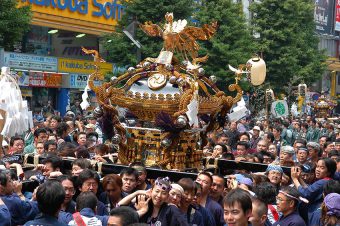Imagine you are going out to dinner at your favorite Chinese or Japanese restaurant. What is the first thing you see as you approach the entrance? Most commonly, you’ll find a pair of statues flanking each side of the door that resemble a crossbreed between lions and dogs. The statues you find at a Chinese restaurant versus a Japanese restaurant are actually different, yet they share a great deal of history. The Japanese statues are called koma-inu and they are most commonly found guarding the entrance to Shinto shrines, within shrines, or at Japanese Buddhist temples. These statues can also be found at nobility residences or even ordinary peoples’ homes. The main purpose of these statues is to ward off evil and keep in good.
These statues originated from the ancient Orient and India, made their way through Korea, and finally reached Japan. This explains the name “koma-inu,” which literally translates to “Korean dogs.”
The pair of lion dogs are identical other than one difference- one has their mouth open while the other has theirs closed. The lion dog with its mouth open is pronouncing the first letter of the Sanskirt alphabet, which is “a.” The lion dog with its mouth closed is pronouncing the last letter “um.” Together, they are representing the beginning and ending to all things. The two sounds together make the syllable “aum,” which is a sacred syllable used in many Asian religious practices.
Ever since the Edo Period, other forms of guardian statues can be found before shrines and temples, including the most common image of foxes at Inari shrines. Another popular variant would be shisa. Shisa are a type of lion dogs that are found all over the Japanese island of Okinawa. In this variant, the open mouth represents “scaring away evil,” while the closed mouth represents “keeping in good.”
These iconic statues are found all over Japan and they contribute greatly to Japan’s culture and history. The differences between each pair of statues can be dramatic depending on what shrine or temple they are found at, however their purpose and meaning stand true.






One Response
Togoshi Hachiman(shrine) – Sanpai Japan
[…] hall). In front of the Honden, there are two Komainu (guardian lion-dogs, read about them here:]http://sanpai-japan.com/2016/07/11/what-are-koma-inu/), which are the oldest in the Shinagawa district and are registered as tangible important cultural […]